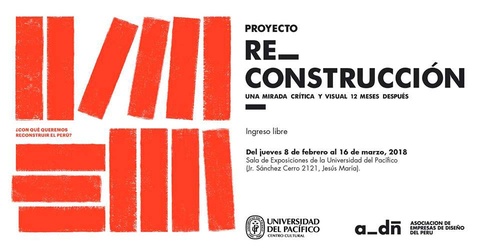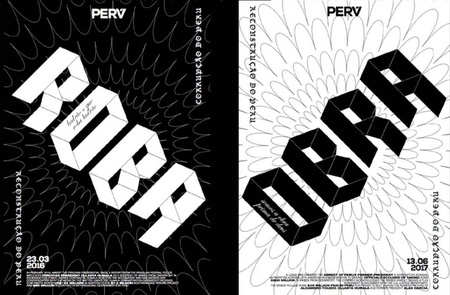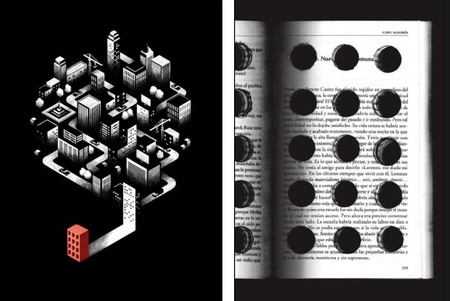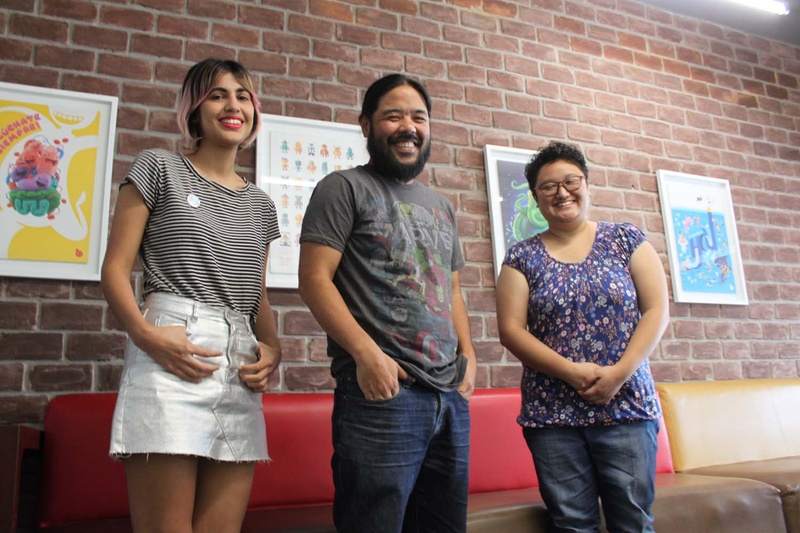Art can be understood in many ways. A form of expression, a view of the world, a spiritual inspiration. Nowadays, it can also fit the definition of a means of creative work. Graphic design is perhaps the best way to understand how many art fans have found a specialty to make this their profession and way of life.
In Peru, the new generations of Nikkeis have chosen this alternative career to the artistic vocation of cartoonists, painters and photographers, although many of them carry out their own projects of comics, short films and artistic exhibitions, among others. The world of digital art is as new in the country as it is attractive due to the quality of the work these creators do and the prestige of the agencies they serve.
Brandlab is a design agency that creates logos, packaging and a range of items that identify commercial products (branding, although it covers much more). Juan Carlos Yto and Andrés Nakamatsu are art directors here. “Our task is to understand the essence of a brand and its business to provide a solution through visual communication,” explains Juan Carlos Yto. Art to communicate.
Both studied at the Toulouse Lautrec Institute (like many other Nikkei), although their vocation came from much earlier. Andrés says that in his case his interest began when as a child he picked up a pencil and started drawing. “At first it was replicating drawings, then creating them, until you wake up, you're 18 years old and you continue with that taste.” Later he discovered that this career is based on scientific methods and theories that follow certain currents. Art as science.
Art and choice
Himi Saito Gushiken's vocation for art also dates back to his childhood, when he spent “endless hours dedicated to drawing, scavenging for materials and experimenting in a simple and pure way.” He studied at the Corcoran School of the Arts in Washington DC, at SACI in Florence, Italy, and at the Pratt Institute in New York. Upon returning to Peru, he joined one of the first branding companies in Peru. “I have had projects with clients that are about learning, and other personal ones that are about introspection.”
Fortunately, he always had the support of his parents. “My father is an economist and my mother is an accountant, but perhaps under other circumstances they would have dedicated themselves to art. In my family there was always room to express ourselves, they were never oblivious to us studying or devoting ourselves to what we really wanted.” Art as an opportunity to choose.
Percy Kiyabu also had that option to choose, although both are from a time when most parents, Nikkei or Japanese emigrants, wanted their children to take care of the family businesses they had started. These were times when the economic crisis outlined other priorities. “Before, the Japanese colony was more closed, at La Victoria school, where I studied, 90 percent were Nikkei. That's why when we start studying in other places, new social circles open up."
Art and profession
Twelve years ago, Percy Kiyabu and his partner Kurt Gastulo created Plan B, an agency that began offering design services for advertising agencies. Percy remembers that at the beginning there were four people and now there are more than twenty, with teams divided by areas, where there is space for 3D illustration, animation and post-production for high-level brands. “Design has grown a lot in Peru, now we see other styles and trends from all over the world.”
When he started drawing, he remembers that he had a Japanese influence as a result of television (the Japanese drawings of the eighties) and the manga that he shared with his uncles and cousins. “Unconsciously, you remember what you have seen.” That strong presence of the Nikkei is also in the new generations who see in movies and comics new engines to create. This is what happens to Diana Okuma, illustrator in Plan B, who shares with him that hobby that has become a profession.
“I always liked to draw but it was at the end of school, when they asked me what I saw myself doing in five years, that I knew I wanted to continue drawing.” This year, together with Percy and Pamela Espino, they participated in the ADÑ call, an association of design companies in Peru that devised the “ Re_Construcción ” project, a critical look at the reaction of the government and society after the natural disasters caused by the Coastal Child Phenomenon a year ago, through posters. Art to reflect.

Art and criticism
Replacing oil paintings with graphic design, 31 posters were presented in the gallery of the Cultural Center of the Universidad del Pacífico, about the landslides and floods that caused the death of 158 people and left nearly 300,000 citizens homeless. The objective was to use the designer as “an active, reflective and responsible agent of his community, capable of generating a critical debate to strengthen the civic development of the country and its professional practice,” wrote Fernando Prieto for the curatorial text.
This art with a social sense is appreciated in works that are critical, motivating and instructive, as is the case of the poster by Juan Carlos Yto and Andrés Nakamatsu that was made by punching holes in a book, “The world is wide and foreign”, by Ciro Alegría , leaving holes like those in a brick. “We find a similarity between the Rumi people, from the novel, and today's Peru. Unlike art, which is free, in design there is a message that must be understood by the public.”
“As communicators, we may not be able to change the world with a poster, but we can generate some type of debate,” adds Andrés. From a more critical point of view, the poster by Himi Saito and Richars Meza uses two words of similar writing but with opposite purposes: works and steals. “These projects are a form of activist expression, as designers we not only have the inputs but the responsibility of creating pieces that serve to raise awareness in Peruvian society.” Art for conscience.

Art and construction
The proposal by Percy Kiyabu, Diana Okuma and Pamela Espino was a drawing that resembles a futuristic city through which a huge brick seems to have passed. It was worked by hand, with a pencil, with vector illustration and photo retouching programs. Getting to the idea took several sketches and several days and the graphic work took a week. Inspiration, in the case of the Plan B team, occurs in conceptualization. Art as an idea.
Having the same training, the dialogue between them was very easy. “We wanted to give an idea of hope, a look at the future, although it is not a closed message,” says Pamela. It may go unnoticed but the influence of manga, comics and graphic novels, due to colors and illustration, is present in their poster (a reference for them is the Japanese Hayao Miyazaki). For Juan Carlos Yto, oriental minimalism, the sense of order and Japanese discipline are fundamental to build in design.
“The Japanese art of synthesis is in the poster, which should be easy to learn,” says Yto. Nakamatsu sees reasoning before improvisation in Japanese. “Japan as a graphic trend covers a varied spectrum, from harmonious minimalism to mathematical kitsch.” For Himi Saito, the Nikkei identity is a set of visual and cultural references that influence it. “They contain a Japan of yesteryear, of wonderful traditions that our ojichan and obachan brought and that I still understand.”
New artists
Without a doubt, graphic design is a new art form that is gaining notoriety. The proof is in the number of Peruvian Nikkei designers. In Brandlab, in addition to Yto and Nakamatsu, there are Andrés Hiromoto and Tadashi Matayoshi, while in Plan B there are, in addition to Kiyabu and Okuma, Cecilia Tamashiro, Víctor Nakandakari, Emilio Naka and Oscar Arakaki (many of them in production and 3D) . In that sense, the artist Haroldo Higa has also made an effort to group them within the Nikkei Young Artists Meetings .
For Yto, a key word to differentiate the creative proposal from graphic design is research. Nakamatsu talks about visual coherence and believes that the great presence of the Nikkei community can respond to “that logical, pragmatic and rational way of our upbringings, which goes hand in hand with our profession.” Kiyabu believes that by working collectively, these new artists are breaking down old prejudices, such as distrust of others for fear of being deceived. Art to unite.
For Diana Okuma, it is also essential that there is trust within the family so that parents decide to support you in choosing this short career. “At first, my parents didn't know what I did until they saw the work we do at the agency in supermarkets,” adds Pamela Espino. Advertising, first, and art galleries, later, are the territories they are conquering. Art to dream.

© 2018 Javier Garcia Wong-Kit







